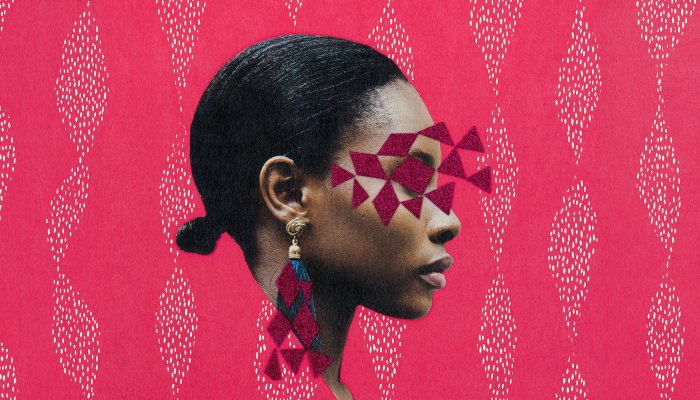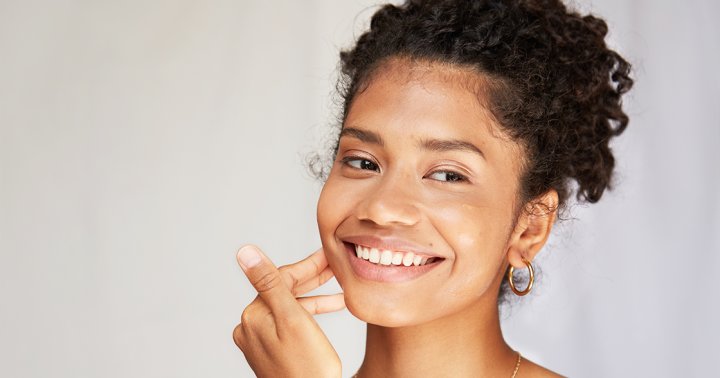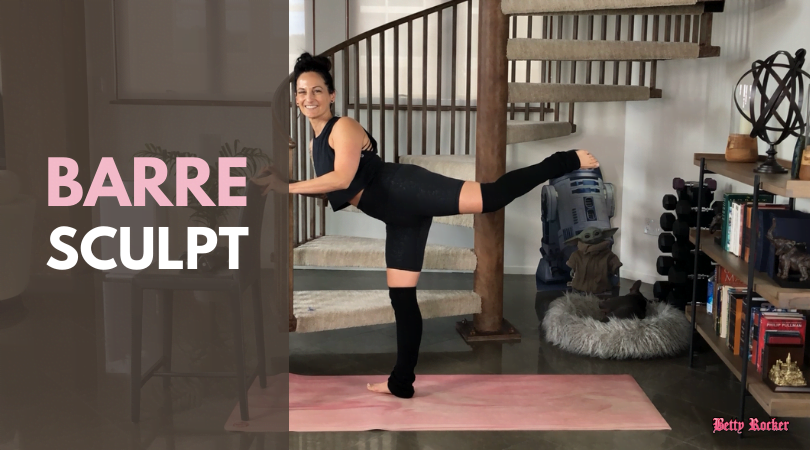I’m A Mixed Black Woman & This Is How I Finally Released Toxic Beauty Standards

We live in a society that is ruled by how one looks. As much as we laud the importance of inner beauty, personality, accomplishment, and the like, too often what we are first judged by are our looks. In the United States, a white aesthetic has historically been the standard that non-white women are held to when it comes to assessing their beauty, which is automatically a losing proposition for us. For women of color, watching our hairstyles, fashion choices, and aesthetic be appropriated and glorified in mainstream society when worn by white women and demonized when women of color rock the same hairstyles, fashions, and aesthetic, is a bitter pill to swallow.
Against this backdrop, it is no wonder that as a young girl of color, I struggled to find and understand beauty in myself.
Now, don’t get me wrong: I always felt accepted and loved by my family and my community. But I always stuck out like a sore thumb. School and family photos felt like a “Where’s Waldo” story where, to find me, you only had to pick out the one speck of pepper in the salt, which was pretty easy to do.
When I was young, being pretty didn’t matter much to me, as I was more engrossed in a mini-existential crisis wherein I found myself too often having to explain my existence to people. It felt at times as though I needed to justify my presence in white spaces—like the time when I was about 12 and rode my bike to a nearby ice cream stand, and while waiting in line, the man in front of me started giving me the third degree about where I was from, asking if I was a foster child, or if my mother was cleaning the house for someone around there and brought me along. When he didn’t like my responses (that I lived nearby) because I “couldn’t possibly be from his neighborhood,” it took standing my ground and explaining that indeed I was from his neighborhood while blinking back tears—and his wife, finally noticing this, admonishing him to “leave the poor child alone.”
Statements like “no, I am not adopted” or “no, I am not a foster child; this is my mother” were regular refrains when I was young. A few times I even told friends that my skin color was essentially a “permanent tan” so they would stop asking me about why I was brown when my parents were white. (When I was a baby, my mother married another man—a white man—who adopted me and raised me as his own.)
As a child, I would often closely examine my family members; my grandparents, my mother, my sisters, my cousins, recognizing the similarities between them, but never really seeing myself reflected back in their faces. Looking at photos of my biological father did not spark any recognition of self either; it was like looking at stranger, because he was.
I listened to all types of music back then and ravenously consumed pop culture like all good tweens and teens do. I was exposed to images and representations of beautiful and famous Black women—Janet Jackson, Whitney Houston, Jada Pinkett, Nia Long, and others. But their aesthetic and beauty were foreign to me because the most influential women in my life were those closest to me, which made them all automatically beautiful in my eyes.
The challenge for me then was knowing that I could never look like them. My hair wasn’t straight and long but rather curly and deceptively short. Their eyes were blue or green; mine were honey brown. Their skin was white, and mine was bronze. At one point, I did try straightening my hair by relaxing it and was horribly burnt by the chemicals. That was in tenth grade and the last time I ever tried relaxing my hair.
At the time, I never thought of myself as attractive or unattractive. I was just me, and I worked with what I had. My friends and family did their best to build me up, telling me how cute I was or how nice I looked in the different ensembles I put together; apparently, I had my own special fashion and styling flair. I always appreciated the compliments but took the praise as them loving on me and didn’t take their words too seriously.
As I got older and boys started coming into the picture, I remember being told on countless occasions that I was “pretty for a Black girl.” I was and am always incredulous as to how those boys could truly believe that was a compliment. In my head, I always thought, what does that mean—am I pretty or not? Was I not supposed to be pretty because I was Black?
One boy told me to my face that even though he found me beautiful, he could never “bring me home” because his parents wouldn’t accept me. He said I would have to be on the level of the women in TLC (the popular ‘90s to early ‘00s R&B group) for him to “bring me home.” When he said that, I literally snorted and thought to myself “you wish” (because he never had a chance with me to begin with and presumed that I thought going home to meet his parents was some sort of privilege…it wasn’t), promptly exited the conversation, and never spoke to him again because I was so put off.
So, what ultimately helped me turn the corner and begin to recognize my beauty? I think it was a combination of things, the primary one being the intentional self-education I was undergoing.
As I matured, I recognized that my friends and family were pretty in their own right, and that their type of beauty was simply the preferred societal aesthetic archetype. I also knew at a deep gut level that this aesthetic wasn’t meant for me. In some ways, this realization took the pressure to conform off of me during high school and allowed me focus on other things. I understood early on that conformity in this sense was futile, and I made peace with it.
Because I had let go of the need to conform and didn’t spend as much time on how I looked, I dove headfirst into my passions, hobbies, and the activities that made me happiest—activities like student government, sports, marching and concert band, teen community improvisational theater, and many others. These activities helped me find my voice and enabled me to carve out my own little niche in the world.
One of the best parts of these activities was that they also exposed me to many people beyond the ethnically monolithic community I was being raised in. The people I met through these activities came from more diverse backgrounds and had different worldviews. They generously imparted some of those experiences and perspectives to me. This is when my perspective of the world began to expand. With this expanded worldview, I became able to look at myself with better eyes, which helped me contextualize and remove the lens of racism, which for too long tainted how I perceived myself.
As I began to learn about and explore other cultures and different standards of beauty, it led to an appreciation that beauty comes in many forms—including my own. Finding elements of myself in those other non-mainstream places helped me normalize that beauty didn’t have to be confined to the very narrow box society dictated.
This article was originally published by mindbodygreen.com. Read the original article here.




